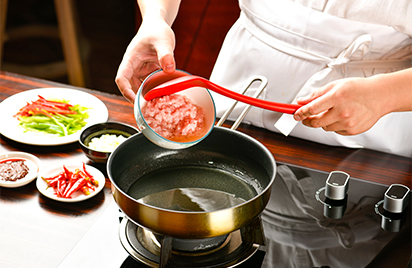5 Essential Ingredients for Chinese Food
A lot of people say Chinese food is hard to made and cook! To some extent, the answer is yes. However, it will be much easier if you know the essential Chinese food ingredients for making Chinese food. Today, we are going to introduce the five essential ingredients for making Chinese Food!
Soy Sauce(Jiangyou) usage in Chinese Food
Soy Sauce is the king of all sauces for Chinese. The usage of soy sauce in Chinese cooking is as important as it is salt & pepper in western cuisine. Chinese use soy sauce almost every day; every Asian household will keep at least one bottle of soy sauce in their house.
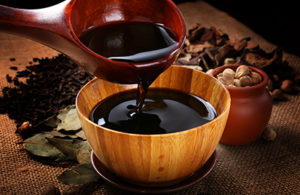
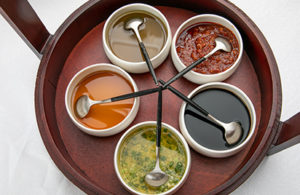
A lot of articles and experts reveal the sodium content in soy sauce and pose health concerns about soy sauce—many label soy sauce as unhealthy, high in MSG, cancer-causing product. However, to define soy sauce is unhealthy is just too cursory. We should take three things into considerations: Usage, Selection, and Amount.
Soy Sauce is less of a sauce but more of an ingredient.
We rarely use soy sauce alone as a dipping sauce because of its noticeable saltiness. We usually dilute the sodium content in soy sauce by adding other ingredients. The only time we use soy sauce is when cooking or brining. Moreover, after adding soy sauce to your food, you don’t need to add as much salt as you would do without soy sauce.
There are many different kinds of soy sauce out there that we can talk about all day. However, there are only two types of ways to brew soy sauce: Chemical Production and Traditional Production. Chemical production is less expensive because soy sauce manufacturers use high heat and chemicals to accelerate the production process. Such production practice will result in higher yield but less flavorful soy sauce. Thus, factories add artificial coloring and flavor enhancers to “Increase” the taste. This process produces some undesirable compounds which do not exist in naturally fermented soy sauce, including carcinogens.
On the other hand, traditional soy sauce making is soaking soybeans in water, roasting, and crushing the beans. Then, they will mix soybeans with culturing mold, most commonly Aspergillus, and left for two to three days to develop. Naturally brewed soy sauce consumes more time to make but will result in higher quality, natural aroma, and healthier products. Thus it is more expensive than regular soy sauce.
Green Onion, Ginger, Garlic for Chinese Food
The most Iconic Ingredient(s) after soy sauce would be Green Onion, Ginger, and Garlic (GGG).
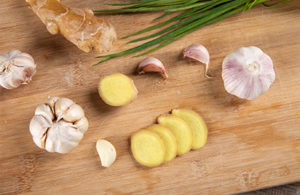

GGG is what you will see pretty much every time in a Chinese kitchen; The cook will put the stove on high, pour in oil, wait until the oil heats up, throw in chopped green onion, ginger and garlic. Most of Chinese stir fry dishes start with GGG no matter what kind of recipes you have. The GGG is more like ingredients than food to Chinese. So if you want to cook some authentic Chinese food for your family, now you are heading to a good start!
Fermented Bean Pastes in Chinese Cooking
Fermented bean pastes are common cooking ingredients for Chinese food. This delicious bean paste comes from fermented beans, salt, rice, and various spices.
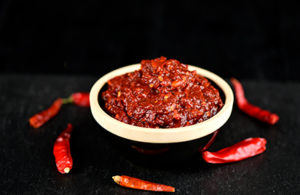

Chinese use fermented bean pastes in their cooking as a flavor enhancer. The fermentation process of the seeds will bring out a uniquely deep and complex umami profile. Asians love to put fermented bean pastes in their cooking, and gradually introduced to the world. You will see different types of fermented bean pastes in Asian markets here in the States. To find the best-fermented bean paste, you have to check the shelf label and looking for naturally fermented bean paste. Any added chemicals and harmful substances are harmful to our bodies. Only the naturally fermented bean paste will preserve all the goodness of fermented bean paste.
The primary nutrients of fermented bean pastes are protein, fat, vitamins, calcium, phosphorus, iron, and live cultures. Fermented bean pastes are rich in high-quality plant protein. Not only can it increase the nutritional value of the dishes during cooking, but also the protein can generate amino acids under the action of microorganisms. Fermented bean pastes are also rich in linoleic acid and linolenic acid, which are beneficial for the body to supply essential fatty acids and reduce cholesterol—thereby reducing the risk of cardiovascular disease. The fat in fermented bean pastes is rich in unsaturated fatty acids and soybean phospholipids, which can maintain the elasticity of blood vessels, strengthen the brain, and prevent the formation of fatty liver.
Cooking Wine for Chinese Food
Cooking Wine also knows as Liaojiu(Wine for Cooking), which is a popular cooking ingredient in Chinese Cuisine.
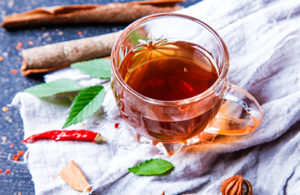

Chinese use cooking wine for cooking meats, poultry, seafood, and eggs. During the cooking process, alcohol helps to dissolve the organic substances in the dishes, and a small number of volatile ingredients in the cooking wines interact with the food to produce new flavors and reduce fishy and greasy taste. The other role of cooking wine is that alcohol reacts with carboxylic acids in the diet to produce aromatic and volatile ester compounds. After cooking, most alcohol is volatilized by heating and does not remain in the dishes.
Cooking wines usually are not for a drink since a lot of them contain spices and flavor-enhancers. The well-know cooking wine is produced in Shaoxing (Shao Hsing) area. So-called Shaoxing wine, it has been in production since dynastic times. Shaoxing Wine is one of the most famous varieties of Huangjiu (Chinese Wine Type), or traditional Chinese wines, fermented from rice. It is widely used as both a beverage and a cooking wine in Chinese Cuisine.
Chinese Peppercorn and Star Anise
Chinese Peppercorn also knows as Sichuan Pepper (Zanthoxylum Bungeanum Maxim), which is a kind of popular ingredient to enhance the spicy and numbing taste of a dish.

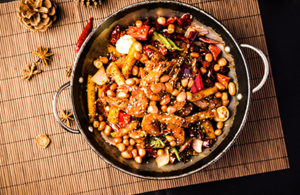
Traditional Sichuan cuisine uses a large amount of Chinese Peppercorn. With the popularity of Sichuan cuisine, the planting area and yield of peppercorns have also increased significantly. In Traditional homemade seasonings in northern China, Peppercorn and star aniseed are necessary for stews.
Chinese Peppercorn has a wide range of uses. The peel can be used as a seasoning and can extract aromatic essential oils. It can also be used as medicine. Most commonly used for flavoring and medicinal purposes. In Chinese cuisine, a small amount of star anise is often added to fish and meat to cook stewed and spiced dishes. It is also one of the five ingredients of the famous “Chinese Five Spice Powder.” Star anise is very popular, and it is always kept in handy for Chinese Households because they will use star anise at least half of the dishes they cook at home.
If you are looking for authentic Chinese Ingredients, you are in the right place! Fresh International Market provides a wide variety of imported & domestic Asian groceries. You will find these five essential ingredients for not only Chinese food but also tons of Chinese seasonings here. We also partner with Mercato to provide the only Asian Grocery delivery service in the Chicago Area! Come and try us out!



